H enri Gaudier was born in Saint-Jean-de-Braye near Orléans. In 1910, he moved to London to become an artist,
enri Gaudier was born in Saint-Jean-de-Braye near Orléans. In 1910, he moved to London to become an artist,  even though he had no formal training. With him came Sophie Brzeska, a
even though he had no formal training. With him came Sophie Brzeska, a  Polish writer over twice his
Polish writer over twice his  age whom he had met at the Bibliothèque Sainte-Genevièvein Paris,
age whom he had met at the Bibliothèque Sainte-Genevièvein Paris, and with whom he began an intense symbiotic relationship, annexing her surname although they never married. (According to Jim Ede the linking of their names was never more than a personal arrangement.) During this time his conflicting attitudes towards art are exemplified in what he wrote to Dr. Uhlmayr, with whom he had lived the previous year:
and with whom he began an intense symbiotic relationship, annexing her surname although they never married. (According to Jim Ede the linking of their names was never more than a personal arrangement.) During this time his conflicting attitudes towards art are exemplified in what he wrote to Dr. Uhlmayr, with whom he had lived the previous year: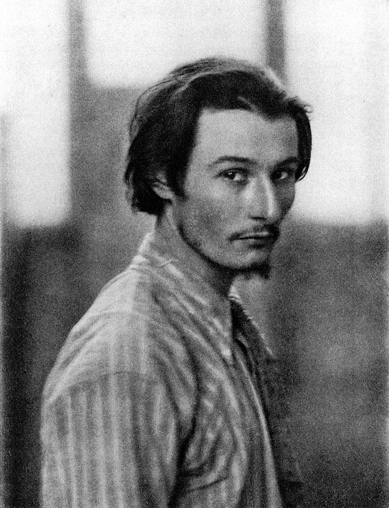
 enri Gaudier was born in Saint-Jean-de-Braye near Orléans. In 1910, he moved to London to become an artist,
enri Gaudier was born in Saint-Jean-de-Braye near Orléans. In 1910, he moved to London to become an artist,  even though he had no formal training. With him came Sophie Brzeska, a
even though he had no formal training. With him came Sophie Brzeska, a  Polish writer over twice his
Polish writer over twice his  age whom he had met at the Bibliothèque Sainte-Genevièvein Paris,
age whom he had met at the Bibliothèque Sainte-Genevièvein Paris, and with whom he began an intense symbiotic relationship, annexing her surname although they never married. (According to Jim Ede the linking of their names was never more than a personal arrangement.) During this time his conflicting attitudes towards art are exemplified in what he wrote to Dr. Uhlmayr, with whom he had lived the previous year:
and with whom he began an intense symbiotic relationship, annexing her surname although they never married. (According to Jim Ede the linking of their names was never more than a personal arrangement.) During this time his conflicting attitudes towards art are exemplified in what he wrote to Dr. Uhlmayr, with whom he had lived the previous year:
| “ | When I face the beauty of nature, I am no longer sensitive to art, but in the town I appreciate its myriad benefits—the more I go into the woods and the fields the more distrustful I become of art and wish all civilization to the devil; the more I wander about amidst filth and sweat the better I understand art and love it; the desire for it becomes my crying need.  | ” |
He resolved these reservations by taking up sculpture, having been inspired by his carpenter father. Once in England Gaudier-Brzeska fell in with the Vorticism movement of Ezra Pound and Wyndham Lewis, becoming a founding member of the London Group.The London Group is an artists' exhibiting society based in London, England, founded in 1913, when the Camden Town Group came together with the English Vorticists and other independent artists to challenge the  domination of the Royal Academy, which had become unadventurous and conservative. Founding artists included Walter Sickert
domination of the Royal Academy, which had become unadventurous and conservative. Founding artists included Walter Sickert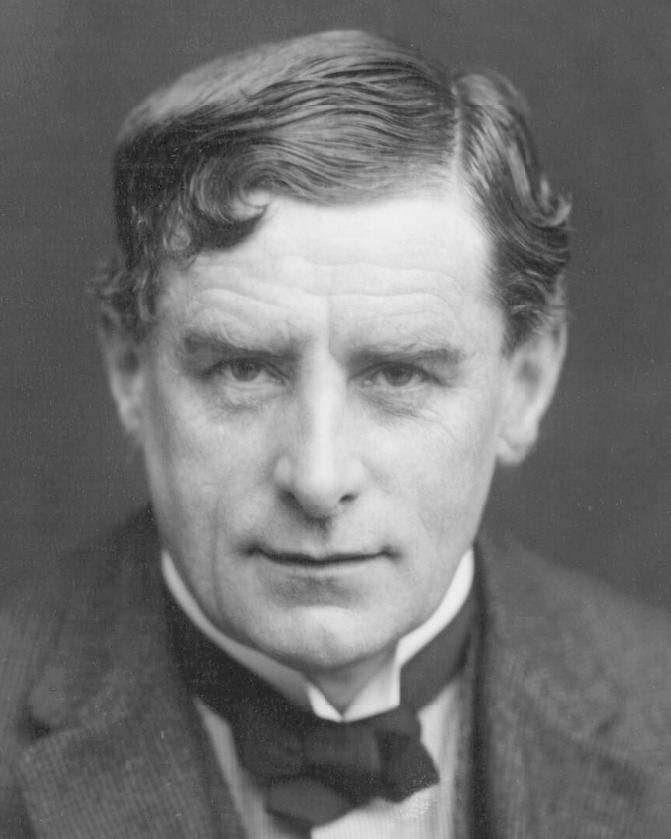 , Jacob Epstein, Wyndham Lewis
, Jacob Epstein, Wyndham Lewis and Henri Gaudier-Brzeska. Throughout its history The London Group has consistently held open submission exhibitions to encourage and support other artists struggling to get
and Henri Gaudier-Brzeska. Throughout its history The London Group has consistently held open submission exhibitions to encourage and support other artists struggling to get their work shown in public. The open submissions are shown along with the work of existing members and guest artists.
their work shown in public. The open submissions are shown along with the work of existing members and guest artists.
One of the oldest standing artist led organisations in the world The London Group continues to exist today with over 80 members. In 2011 the open exhibition presented over 140 artists at the Cello Factory. The group is currently building toward its 100th anniversary in 2013 with several planned shows, both historical and contemporary. After coming under the influence of Jacob Epstein
The group is currently building toward its 100th anniversary in 2013 with several planned shows, both historical and contemporary. After coming under the influence of Jacob Epstein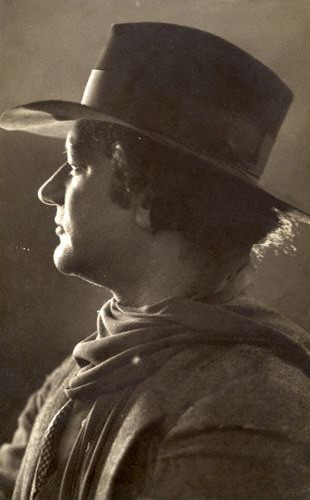 in 1912, he began to believe that sculpture should leave behind the highly finished, polished style of ancient Greece and embrace a more earthy direct carving, in which the tool marks are left visible on the final work as a fingerprint of the artist. Abandoning his early fascination for Auguste Rodin, he began to study instead extra-European artworks located in the British Museum and the Victoria and Albert Museum. As he was unable to afford the raw materials necessary to attempt projects on the scale of Epstein's Indian and Assyrian influenced pieces, he concentrated initially on miniaturist sculpture genres such as Japanese netsuke
in 1912, he began to believe that sculpture should leave behind the highly finished, polished style of ancient Greece and embrace a more earthy direct carving, in which the tool marks are left visible on the final work as a fingerprint of the artist. Abandoning his early fascination for Auguste Rodin, he began to study instead extra-European artworks located in the British Museum and the Victoria and Albert Museum. As he was unable to afford the raw materials necessary to attempt projects on the scale of Epstein's Indian and Assyrian influenced pieces, he concentrated initially on miniaturist sculpture genres such as Japanese netsuke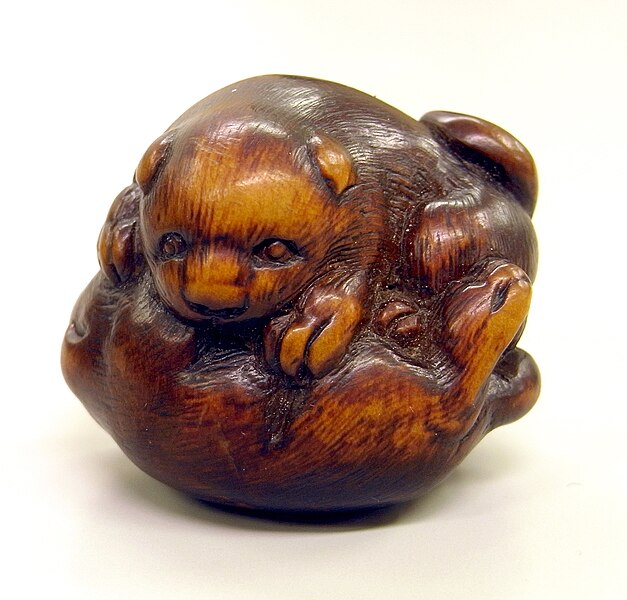 before developing an interest in work from West Africa and the Pacific Islands.
before developing an interest in work from West Africa and the Pacific Islands.
 domination of the Royal Academy, which had become unadventurous and conservative. Founding artists included Walter Sickert
domination of the Royal Academy, which had become unadventurous and conservative. Founding artists included Walter Sickert , Jacob Epstein, Wyndham Lewis
, Jacob Epstein, Wyndham Lewis and Henri Gaudier-Brzeska. Throughout its history The London Group has consistently held open submission exhibitions to encourage and support other artists struggling to get
and Henri Gaudier-Brzeska. Throughout its history The London Group has consistently held open submission exhibitions to encourage and support other artists struggling to get their work shown in public. The open submissions are shown along with the work of existing members and guest artists.
their work shown in public. The open submissions are shown along with the work of existing members and guest artists.One of the oldest standing artist led organisations in the world The London Group continues to exist today with over 80 members. In 2011 the open exhibition presented over 140 artists at the Cello Factory.
 The group is currently building toward its 100th anniversary in 2013 with several planned shows, both historical and contemporary. After coming under the influence of Jacob Epstein
The group is currently building toward its 100th anniversary in 2013 with several planned shows, both historical and contemporary. After coming under the influence of Jacob Epstein in 1912, he began to believe that sculpture should leave behind the highly finished, polished style of ancient Greece and embrace a more earthy direct carving, in which the tool marks are left visible on the final work as a fingerprint of the artist. Abandoning his early fascination for Auguste Rodin, he began to study instead extra-European artworks located in the British Museum and the Victoria and Albert Museum. As he was unable to afford the raw materials necessary to attempt projects on the scale of Epstein's Indian and Assyrian influenced pieces, he concentrated initially on miniaturist sculpture genres such as Japanese netsuke
in 1912, he began to believe that sculpture should leave behind the highly finished, polished style of ancient Greece and embrace a more earthy direct carving, in which the tool marks are left visible on the final work as a fingerprint of the artist. Abandoning his early fascination for Auguste Rodin, he began to study instead extra-European artworks located in the British Museum and the Victoria and Albert Museum. As he was unable to afford the raw materials necessary to attempt projects on the scale of Epstein's Indian and Assyrian influenced pieces, he concentrated initially on miniaturist sculpture genres such as Japanese netsuke before developing an interest in work from West Africa and the Pacific Islands.
before developing an interest in work from West Africa and the Pacific Islands.
In 1913, he assisted with the illustrations of Haldane Macfall's book The Splendid Wayfaring along with Claud Lovat Fraser and Edward Gordon Craig.



Gaudier-Brzeska's drawing style was influenced by the Chinese calligraphy and poetry which he discovered at the "Ezuversity", Ezra Pound's unofficial locus of teaching. Pound's interaction with Ernest Fenollosa's work on the Chinese brought the young sculptor to the galleries of Eastern art, where he studied the ideogram and applied it to his art. Gaudier-Brzeska had the ability to imply, with a few deft strokes, the being of a subject. His drawings also show the influence of Cubism.
work on the Chinese brought the young sculptor to the galleries of Eastern art, where he studied the ideogram and applied it to his art. Gaudier-Brzeska had the ability to imply, with a few deft strokes, the being of a subject. His drawings also show the influence of Cubism.
 work on the Chinese brought the young sculptor to the galleries of Eastern art, where he studied the ideogram and applied it to his art. Gaudier-Brzeska had the ability to imply, with a few deft strokes, the being of a subject. His drawings also show the influence of Cubism.
work on the Chinese brought the young sculptor to the galleries of Eastern art, where he studied the ideogram and applied it to his art. Gaudier-Brzeska had the ability to imply, with a few deft strokes, the being of a subject. His drawings also show the influence of Cubism.
At the start of the First World War, Gaudier-Brzeska enlisted with the French army. He appears to have fought with little regard for his own safety, receiving a decoration for bravery before being killed in the trenches at (ab ove his studio)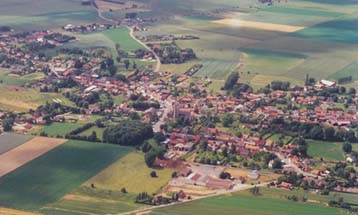 Neuville-St.-Vaast.
Neuville-St.-Vaast.  During his time in the Army, he sculpted a figure out of the butt of a rifle taken from a German soldier, "to express a gentler order of feeling"
During his time in the Army, he sculpted a figure out of the butt of a rifle taken from a German soldier, "to express a gentler order of feeling"
 Neuville-St.-Vaast.
Neuville-St.-Vaast.  During his time in the Army, he sculpted a figure out of the butt of a rifle taken from a German soldier, "to express a gentler order of feeling"
During his time in the Army, he sculpted a figure out of the butt of a rifle taken from a German soldier, "to express a gentler order of feeling"
Gaudier met Sophie Brzeska, a Polish ex-governess twice his age when he was only 18. Gaudier was an artist and Brzeska a novelist. Several books about Gaudier's work have been produced, but only the  book Savage Messiah by H. S. Ede (Jim Ede) focuses on the relationship. Brzeska was more a companion and her relationship with Gaudier resembled a co-dependancy, since both suffered from clear mental health issues. below where his studio wasHenri was devoted to Sophie, even taking her last name as his, but Sophie was often dismissive and cold towards Henri's romantic overtures (indeed, according to Ede they either never had sex, only once or twice or rarely).
book Savage Messiah by H. S. Ede (Jim Ede) focuses on the relationship. Brzeska was more a companion and her relationship with Gaudier resembled a co-dependancy, since both suffered from clear mental health issues. below where his studio wasHenri was devoted to Sophie, even taking her last name as his, but Sophie was often dismissive and cold towards Henri's romantic overtures (indeed, according to Ede they either never had sex, only once or twice or rarely).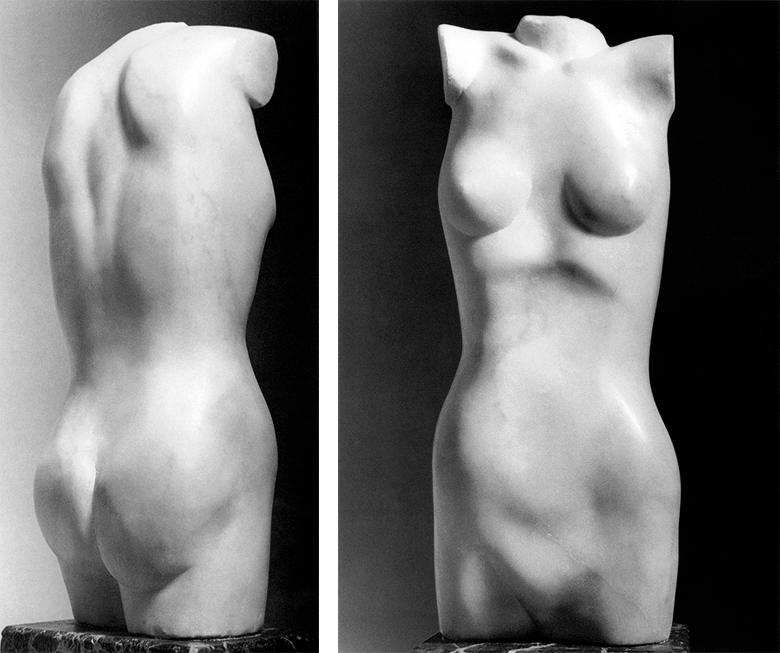
They were often apart and Sophie would buy Henri prostitutes for his enjoyment instead of having relations with him. Brzeska is often left out of accounts of Gaudier's life.
Even Savage Messiah itself focuses on the artist and Brzeska is regarded with very little interest.
Ken Russell's 1972 film of the book changes the focus to Sophie and Henri Gaudier's relationship.Alone, unrecognized and poor, the struggling, young film-maker found faith, during the 1950s, in a slim biography of the Vorticist sculptor, Henri Gaudier-Brzeska. The book, Savage Messiah by H. S. Ede, consisted of letters from the young artist to his soul mate, the older, writer Sophie Brzeska. Of the artist’s life, Russell later said: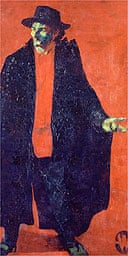
 book Savage Messiah by H. S. Ede (Jim Ede) focuses on the relationship. Brzeska was more a companion and her relationship with Gaudier resembled a co-dependancy, since both suffered from clear mental health issues. below where his studio wasHenri was devoted to Sophie, even taking her last name as his, but Sophie was often dismissive and cold towards Henri's romantic overtures (indeed, according to Ede they either never had sex, only once or twice or rarely).
book Savage Messiah by H. S. Ede (Jim Ede) focuses on the relationship. Brzeska was more a companion and her relationship with Gaudier resembled a co-dependancy, since both suffered from clear mental health issues. below where his studio wasHenri was devoted to Sophie, even taking her last name as his, but Sophie was often dismissive and cold towards Henri's romantic overtures (indeed, according to Ede they either never had sex, only once or twice or rarely).
They were often apart and Sophie would buy Henri prostitutes for his enjoyment instead of having relations with him. Brzeska is often left out of accounts of Gaudier's life.
Even Savage Messiah itself focuses on the artist and Brzeska is regarded with very little interest.
Ken Russell's 1972 film of the book changes the focus to Sophie and Henri Gaudier's relationship.Alone, unrecognized and poor, the struggling, young film-maker found faith, during the 1950s, in a slim biography of the Vorticist sculptor, Henri Gaudier-Brzeska. The book, Savage Messiah by H. S. Ede, consisted of letters from the young artist to his soul mate, the older, writer Sophie Brzeska. Of the artist’s life, Russell later said:

“I was impressed by Gaudier’s conviction that somehow or other there was a spark in the core of him that was personal to him, which was worth turning into something that could be appreciated by others. I wanted to find that spark in myself and exploit it for that reason.”
Born in 1895, H. S. Ede became a curator at the Tate Gallery London, in 1921, where he promoted works by Picasso, Braque and Mondrian. Ede often found himself frustrated by the more conservative tastes of the gallery directors. However, the position allowed Ede to become friends with many avant garde artists, and, more importantly, offered him the opportunity to obtain most of Henri Gaudier-Brzeska’s work through the estate of Sophie Brzeska. An event that helped ensure Henri’s art and reputation.
Gaudier-Brzeska was one of the leading artists of the Vorticist Movement, formed by Wyndham Lewis in 1913. Vorticism developed from Cubism and was linked to Futurism and Impressionism. However, Lewis and some of the other Vorticists, saw themselves as separate - a group of artists focussed on Dynamism, or as the Vorticist and poet, Ezra Pound wrote in his memoir on Gaudier-Brzeska:
VORTICISM“It is no more ridiculous that a person should receive or convey an emotion by means of an arrangement of shapes, or planes, or colors, than they should receive or convey such emotion by an arrangement of musical notes.”“Vortex :- Every concept, every emotion, presents itself to the vivid consciousness in some primary form. It belongs to the art of this form.”Vorticism is art before it has spread itself into flaccidity, into elaboration and secondary application.
Gaudier-Brzeska’s early sculptures had a hint of Rodin, though this wasn’t to last, as the dynamic young artist soon adapted Chinese and Japanese prints and paintings for his needs, before using the processes of Cubism to develop his own unique artistic vision. As Pound later wrote, Gaudier-Brzeska, “had an amazing faculty for synthesis…” which, Pound believed, had the Gaudier-Brzeska lived, would have made him as famous as Picasso. He didn’t. But the fact he produced so much work, “a few dozen statues, a pile of sketches and drawings, and a few pages about his art,” in just a few years (whilst living in desperate and impoverished conditions), only confirms Pound’s belief.

Henri Gaudier-Brzeska : after months of fighting and two promotions for gallantry, Henri Gaudier-Brzeska was killed in a charge at Neauville St. Vaast, on June 5th, 1915.
He was twenty-three.

Born in 1891, the son of a carpenter, Gaudier had been a translator, a forger of paintings, and a student, by the time he met Sophie Brzeska in 1910. Brzeska was almost twice Gaudier’s age, but there was a connection that kept them together for the next 5 years. To mark their bond, they adopted each other’s surname, and became Henri and Sophie Gaudier-Brzeska. above kettles yard

Sophie’s life until meeting Gaudier, had been one of misery and heartbreak, a tale no author of Gothic romantic fiction could have conceived. Sophie was a writer with ambitions to publish her autobiography, Matka, of which she wrote several versions. With intentions to revolutionize art, the pair moved to London, and began their creative life together.
It wasn’t easy. Henri worked by day and sculpted by night. Sophie wrote and rewrote, worked and kept house. Henri forged his own tools, and carved directly into stone. He used off-cuts and (allegedly) a marble headstone to make his sculptures. One story goes, that after an idle brag to an art dealer, who he told he had three new statues ready for show. Henri worked through the night to deliver the statues. When the dealer didn’t turn up at the expected time, Henri carried his sculptures round to the dealer’s gallery and hurled them through its window.
Gaudier-Brzeska was passionate, industrious, creative and dynamic. You can see the attraction Henri’s life and work would have to a young Ken Russell.
In London, Henri met and mixed with Pound, Lewis, and Edward Wadsworth, who together exchanged ideas and loosely formed the short-lived Vorticist group. It was through his association with Vorticism that Gaudier-Brzeska formed his own ground-breaking maxims about sculpture, which he published in the Vorticist magazine Blast:
“Sculptural feeling is the appreciation of masses in relation.Sculptural ability is the defining of these masses by planes.”
Henri was re-defining sculpture, using “the whole history of sculpture” as his Vortex, to give a “complete revaluation of form as a means of expression.”Henri Gaudier

As Henri slowly flourished, Sophie started to weaken. Her health was poor, and their bond constricted. While Sophie recuperated outside London, Henri enlisted in the French army. They never saw each other again.
Even on the front line, Gaudier-Brzeska sketched, carved small statues from the butt of a German rifle, and wrote down more of ideas:

With all the destruction that works around us nothing is changed, even superficially. Life is the same strength, the moving agent that permits the small individual to assert himself.
After his death, Sophie went slowly mad, and wandered the streets of London, her fingers knitting together, distraught over the loss of her love.
Following his death Sophie Brzeska became distraught, eventually dying in an asylum in 1925
Jim Ede bought a sizeable portion of Gaudier-Brzeska's work from Sophie Brzeska's estate including numerous letters sent between Henri and Sophie. Ede used these as the basis for his book Savage Messiah on the life and work of Gaudier-Brzeska, which in turn became the basis of Ken Russell's film of the same name.

Despite the fact that he had only four years to develop his art, Gaudier-Brzeska has had a surprisingly strong influence on 20th-century modernist sculpture in England and France. His work can be seen at the Tate Gallery, Kettle's Yard,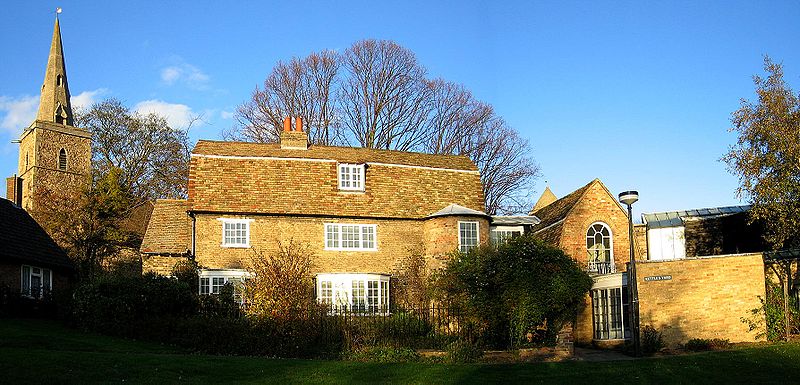 the Musée National d'Art Moderne in Paris and the Musée des Beaux Arts Orléans. The Nasher Museum of Art at Duke University
the Musée National d'Art Moderne in Paris and the Musée des Beaux Arts Orléans. The Nasher Museum of Art at Duke University held an exhibition entitled The Vorticists:
held an exhibition entitled The Vorticists: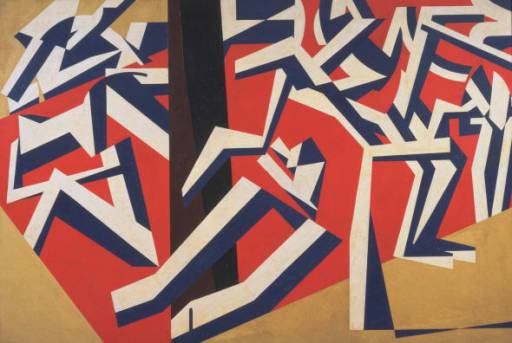 Rebel Artists in London and New York, 1914–18 from 30 September 2010 through 2 January 2011, which included his work.
Rebel Artists in London and New York, 1914–18 from 30 September 2010 through 2 January 2011, which included his work.
 the Musée National d'Art Moderne in Paris and the Musée des Beaux Arts Orléans. The Nasher Museum of Art at Duke University
the Musée National d'Art Moderne in Paris and the Musée des Beaux Arts Orléans. The Nasher Museum of Art at Duke University held an exhibition entitled The Vorticists:
held an exhibition entitled The Vorticists: Rebel Artists in London and New York, 1914–18 from 30 September 2010 through 2 January 2011, which included his work.
Rebel Artists in London and New York, 1914–18 from 30 September 2010 through 2 January 2011, which included his work.
When Alfred Wolmark's full-length oil portrait of the French sculptor Henri Gaudier-Brzeska was first exhibited at the Grosvenor Gallery, London, in February 1914, it was described by the Observer's art critic as "a piece of pictorial impertinence that goes beyond a joke. The intention is probably to suggest a certain demoniac fierceness which may or may not be characteristic of the sitter. The result is merely a demon of melodrama..."
The painted figure, standing against a startling scarlet background, reaches a few inches short of the top edge of a 6ft-high canvas. Gaudier wears a wide-brimmed black hat, black trousers, black boots, a calf-length black cape draped across his shoulders and a collarless shirt of the same flaring shade of red as the background. The gaunt, hook-nosed face is turned to the right while the left hand is held out at the side, palm upward as if hefting something for weight. He looks like a stage anarchist rehearsing the throwing of a bomb.
The flamboyant costume attracted more than stares. He arrived one day at Wolmark's studio, face horribly swollen and bruised. Walking through Soho, a carter had shouted some insult at him and Gaudier had answered back. The carter got down from his vehicle and went for the puny-looking youngster, but Gaudier gave him a punch that laid him out cold. Another man came out of a pub and punched Gaudier, dislocating his jaw. Gaudier turned to run but took the opportunity for a last kick, burying the toe of his boot in the chest of the fallen carter. He had the satisfaction of hearing the crunch of bone. Wolmark would never be able to forget Gaudier, "describing in a whisper this last ferocious thrust".
The face that appears in the portrait is tinged with blue, green and red, in conformity with the stylistic mannerisms of post-impressionist painting. That it also replicated the bruised features Gaudier presented to the painter following his encounter was, of course, entirely coincidental.
Henri Gaudier was 19 when he arrived in London from his native France in early 1911. He was accompanied by Zofia Brzeska, a Polish woman over twice his age, whose name he adopted and who passed in public for his sister; in private, she was an uneasy combination of mother and lover.
For a time they shared a series of squalid rented rooms in north London where the noise, dirt and vermin drove Zofia to the edge of distraction. Eventually they lived apart. She occupied lodgings as salubrious as she could afford, while Gaudier was content with more spartan conditions.
By 1914 he was living and working in a lock-up under one of the railway arches between East Putney station and the river. "Artists should be poor and not indulge in comforts of any kind," he told a friend, Nina Hamnett. He slept on the concrete floor and one inclement night he woke to find himself lying in three inches of water. It was here that he embarked on his largest work. Carved from a half-ton block of Pentelic marble, it was first exhibited as Bust of Mr Ezra Pound.
The photographer Walter Benington visited the studio and recorded work in progress. Its surface covered in parallel chiselled furrows, the bulbous upper portion of the stone looked like a gigantic champagne cork. Across the front of the block, charcoal marks delineated those of the American poet's features he intended approximating. "You understand it will not look like you," Gaudier had told Pound at the outset, repeating, stressing and spacing his words as if to make them better understood, "it ... will ... not ... look ... like you. It will be the expression of certain emotions which I get from your character."
Nevertheless, the scrawled lines of the long straight nose were discernible, and the moustache, marked by a shallow downward curve, was complemented by the deeper, upward curving line from chin to cheek, and, below, the triangular point of the goatee.
"Some of my best days, the happiest and the most interesting," was how Pound remembered the sittings. "There was I on a shilling wooden chair in a not overheated studio with the railroad trains rushing overhead, and there was the half-ton block of marble on its stand, and bobbing about it was this head 'out of the Renaissance'. I have now and again had the lark of escaping the present, and this was one of those expeditions... I knew that if I had lived in the Quattrocento I should have had no finer moment, and no better craftsman to fill it."
Gaudier had yet to write the aphoristic account of sculptural evolution - From the Paleolithic to the Present - which, five months later, would be published in the gigantic puce-covered battery of manifestos called Blast, journal of the short-lived Vorticist movement. The ideas, however, of geometrical metamorphosis distinguishing and differentiating early stone-carving cultures would have been rehearsed in conversation during the cutting of Pound's head. Gaudier would not have been flattered by his sitter's Renaissance comparison, dismissing the formal values of the 15th century until the beginning of the 20th, with scatological relish, as so much shit and wind: "SOLID EXCREMENTS in the quattro é cinquo cento", he was to write in Blast, "LIQUID until the 17th century, GASES whistle until now."
It was, besides, in the tradition of a culture earlier than the Quattrocento, and geographically distinct from the Mediterranean, that Gaudier fancied himself as working. "The races inhabiting Africa and the Ocean islands," he said, "fell into contemplation before their sex: the site of their great energy: THEIR CONVEX MATURITY. They pulled the sphere lengthways and made the cylinder ... and ... left us the masterpieces that are known as love charms."
According to the painter Horace Brodzky, the "purpose and beginnings" of the Pound bust "were pornographic. Both the sculptor and the sitter had decided upon that." Gaudier had been quite specific about the matter, "that it was to be a phallus." According to the older sculptor, Jacob Epstein, the idea had come from Pound, and he had particularly asked that it be made "virile", but Brodzky, who seems to have had no great liking for the poet, claimed that Gaudier "did it by way of disapproval and in contempt for Pound".
The poet, however, appeared content and happily watched it change from sitting to sitting. "[It] begins to look like father Tiber," he told his fiancée Dorothy Shakespear. "It will be less outrageous than I thought and eternally calm - which I ain't."
Pound wrote again to Dorothy a few days later: "[Gaudier's] column gets more gravely beautiful & more phallic each week. I think it will have a great deal of energy as a composition of masses." It was, he thought, on reflection, at its most striking about a fortnight before it was finished - a ragged "kinesis", having yet the potential for change, prior to the smooth, definitively shaped "stasis" of completion: "I do not mean to say that it was better ... but before the back was cut out and before the middle lock was cut down, there was in the marble a titanic energy; it was like a great stubby catapult, the two masses bent for a blow ... Great art is perhaps a stasis. The unfinished stone caught the eye. Maybe it would have wearied it."
Sexual symbolism was all the rage among the London avant-garde at this time. Brodzky remembered Gaudier taking commissions for watch-charms, paperweights and doorknockers, and how the artist would assure his client that the little abstract carving was "symbolic of fecundity or virility, or whatever nonsense he had in his head at the time".
One such piece was a knuckle-duster made for the philosopher TE Hulme. Made from a scrap of brass plate, it had an arc of four holes at the top to accommodate the fingers, a larger hole in the middle for the thumb, flanges curving right and left below to fit the palm. Hulme liked to slip it onto his hand and playfully thump people on the arm to reinforce his philosophical arguments. He also explained the sexual significance of the object: "The two pieces curving out sideways at the bottom are the woman's parted legs. The central hole is the vagina, and the four holes at the top are the woman's head tossing and turning as she achieves orgasm."
Gaudier-Brzeska was 23 years old when he was killed during an attack on a German-occupied village in northern France on June 5 1915. During his nine months of trench fighting he had produced little in the way of art - small pieces of soft stone shaped with a penknife, a Maternity carved from the butt of a stolen Mauser rifle - all lost.
But he left behind, in London, a formidable body of work, thousands of drawings and over a hundred sculptures, many of them now recognised as masterpieces, and inspirational to a later generation of British sculptors: Henry Moore, Barbara Hepworth, Elizabeth Frink. That body of work remains - in plaster, wood, bronze, brass and stone - product of just three hectic and prolific years. The unfulfilled potential, as Ezra Pound put it "the uncreated", was destroyed with him.
· Gaudier-Brzeska: An Absolute Case of Genius by Paul O'Keeffe is published on Thursday by Penguin. To order a copy, call the Guardian book service on 0870 066 7979.
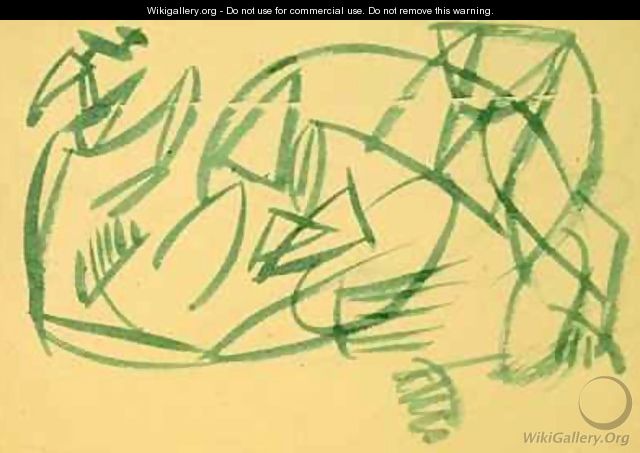



No comments:
Post a Comment